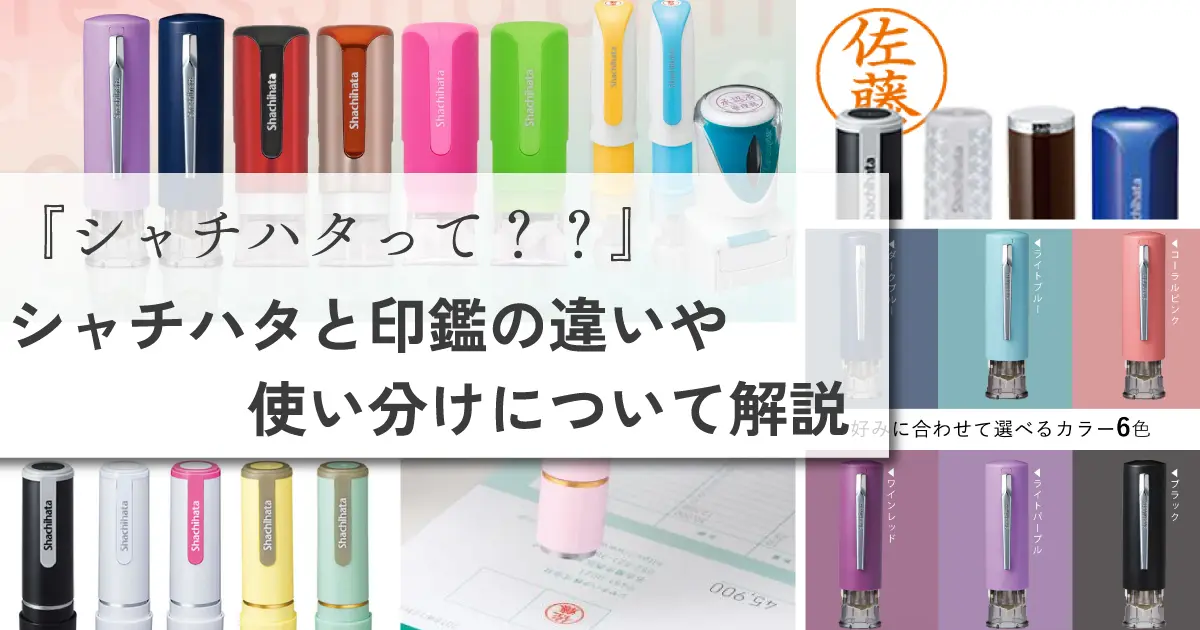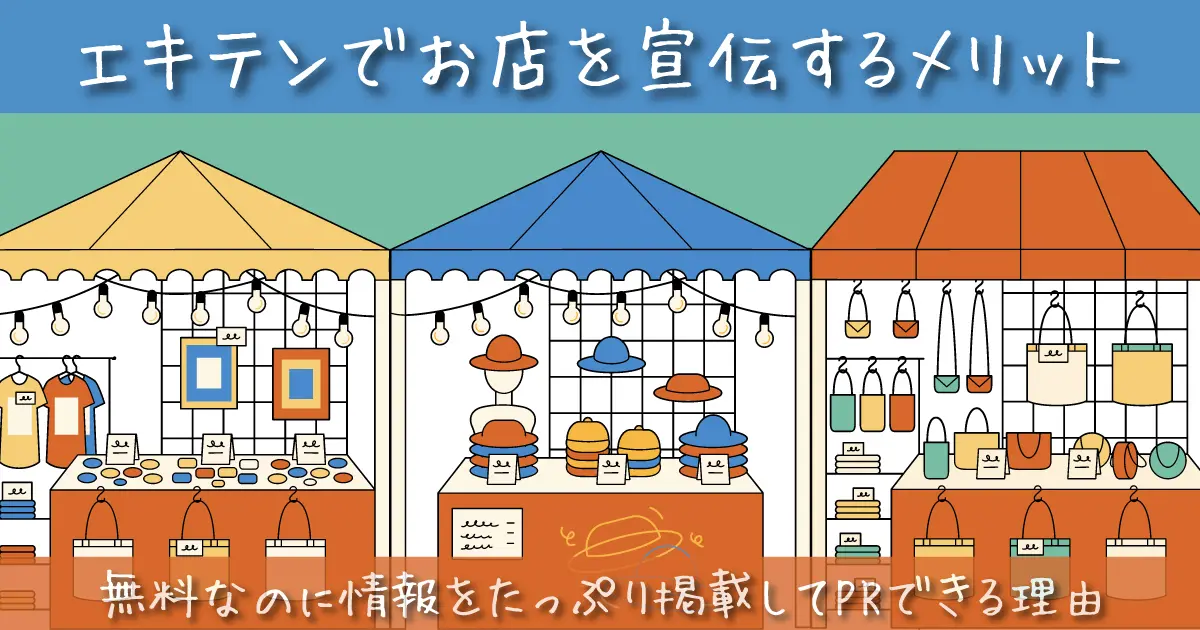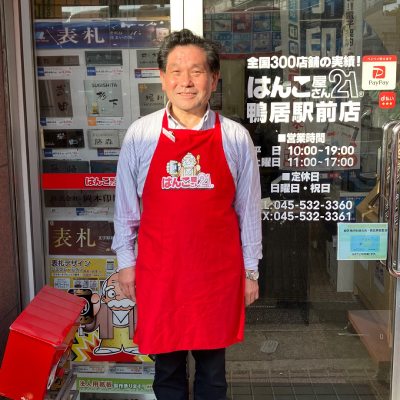There are various types of stamps. There are HANKO that are stamped with vermilion, rubber stamps that are stamped with ink from a stamp pad, and penetrant stamps that are stamped with ink built into the stamp. Even though various stamps are used at work, many people may not be able to tell the difference.
In particular, HANKO and shachihata are often used on a daily basis, so if you don't know how to use them properly, you may have trouble deciding which ones to use. In this article, we will explain the characteristics and usage of Shachihata and HANKO.
About HANKO
First of all, there are two types of HANKO: ``registered seal'', which is registered to the government office that has jurisdiction over the place of residence, ``bank seal'', which is registered to the bank, and ``registered seal'', which is used on a daily basis without any special notification. I will explain each in detail.
Seal
A personal seal is a HANKO that can be used without notification, such as a registered seal or a bank seal. It is probably the most commonly used HANKO, as it is used on a daily basis to prove that the seal was affixed by the person in question. While you can only register one registered seal per person, it doesn't matter how many registered seals you have. Therefore, many people have multiple devices, one for home and one for work. It can be used for a wide range of purposes, including daily errands, company documents, and government office documents.
registered seal
When you submit your registered seal to the government office, you will need to HANKO your identity, have it registered, and have a HANKO registration certificate issued. If you move or the government office that has jurisdiction over your place of residence changes, you will need to re-register. Only one registered seal can be registered per person, and it is not possible to own more than one. It can be said that it is the most important HANKO that an HANKO has.
It is mainly used as a HANKO to affix important contracts such as housing, loans, and insurance, and it is meaningless unless it can be proven that the seal was affixed by the person in question. Therefore, when signing a contract, you may be asked to submit a HANKO registration certificate to confirm that the HANKO is properly registered.
bank seal
As the name suggests, a bank seal is a HANKO that is submitted to the bank. If you use multiple banks, you can use a separate HANKO for each bank, or you can use one. For example, if you have separate bank accounts for living expenses and savings, but use the same bank seal, or if you are opening an account with the intention of passing it on to your children in the future, it may be easier to create a dedicated bank seal. There are also cases. Consider how you will use it when creating it.
What is Shachihata?
So, what kind of stamp does Shachihata specifically refer to? I will explain about killer whale grouper.
Origin of the name Shachihata
Penetration stamps are stamps that do not require ink or a stamp stand when stamping, and are stamped by letting the ink inside the stamp penetrate into the stamp surface. The name of "Shachihata Co., Ltd.", a manufacturer of penetrating stamps, became widely known, and the name stamps (penetrating stamps) with names on them came to be commonly called "Shachihata". Many people may say, ``I've never heard of penetrating stamps, but I know about killer whale groupers.''
Uses of Shachihata
It is used on a daily basis for documents used within the company and for receiving packages. Although it is similar to the situation in which a mitōin is used, a mitōin cannot be affixed without adding vermillion ink each time, so many people may use Shachihata as a substitute for the mitō, as it does not require the hassle of applying vermilion.
Orca grouper is also evolving
Shachihata is a convenient product that has ink built into its body. The product lineup is extensive, including capless types that do not require opening and closing the cap, caps with holders and straps that are convenient to carry, and a wide range of color variations.Shachihata has also evolved.
How to change the ink of a killer whale
There are types that require ink to be injected into the main body through a case shaped like a dropper, and types that require replacement of cartridges soaked with ink.
Summary about killer whale grouper
- Penetration stamp = A stamp that is stamped by refilling the body with ink.
- Shachihata Co., Ltd. = A company that manufactures and sells penetrating stamps.
- Shachihata = A name stamp with a name on it among penetrating stamps, and its common name
Why Shachihata is not allowed on important documents
We introduced the characteristics of Shachihata and HANKO. So why is it said that Shachihata is not allowed for important documents? Here's why.
The killer whale stamp face is made of rubber
HANKO are made by carving ivory, cow horn, wood, etc., but the Shachihata seal is made of rubber. If it is a recent product, the product may have improved, but if used for many years, the stamp surface may deteriorate. Also, the seal impression may be deformed depending on the force of the stamp.
Orca grouper uses ink instead of vermilion
Shachihata seals are stamped by penetrating ink, but HANKO are stamped with vermilion ink. Ink is not suitable for documents that need to be stored for a long time, as the impression may fade or bleed.
Orca grouper is mass-produced
Ready-made types of Shachihata are mass-produced. Therefore, in an emergency, it is not possible to identify individuals.
Due to the above reasons, it is often said that important documents cannot be tagged due to concerns about personal identification, deformation of stamps, and long-term storage.
Advantages and disadvantages of Shachihata and HANKO
We will introduce the advantages and disadvantages of Shachihata and HANKO.
Shachihata
<merit>
- No need for accessories such as ink pads or HANKO mats
- Can be stamped multiple times in a row
<Demerit>
- The stamp surface may be deformed
- The stamp surface may deteriorate
- Due to the use of ink, there is a possibility that the impression will not remain for a long time.
HANKO
<merit>
- Because it uses ink, it is possible to stamp documents that require long-term storage.
<Demerit>
- Ink pads and HANKO mats required
- There is a trick to stamping
Manufacturer and distributor of Shachihata (penetrating seal)
There are other manufacturers that also manufacture and sell products, including Shachihata. We will introduce the features of each company.
Shachihata Co., Ltd.
The official name of the penetrating stamp manufactured and sold by Shachihata Co., Ltd. is "X Stamper." There are various types of X stampers, including name stamps with your name on them, and types that are used for office work such as "received" and "confirmed" stamps.
Sunbee Co., Ltd.
If you try to order penetrating stamps online, the product name ``Quick Stamper'' will be listed next to Shachihata's X Stamper. Quick Stamper is a penetrating stamp manufactured and sold by Sunbee Co., Ltd. Like Shachihata, we have a variety of products.
Brother Industries Co., Ltd.
Brother Industries, Ltd.'s main business is printers, but it also sells penetrating stamps and special inks. There are also printers for sale specifically for penetrative stamps, which have the advantage of being placed in stores that sell stationery and other items and having them printed immediately after ordering.
About recommended sizes for HANKO
The sizes of personal seals, registered seals, and bank seals are not necessarily fixed, but there are commonly used types, so we will introduce them to you.
Recommended size for seal
10.5mm/12mm
Since there are commonly used sizes for seals, the document fields are created accordingly. It also needs to be large enough to be able to tell at a glance who has affixed the seal, and not to interfere with the contents of the document. Therefore, something that is too small or too large can be said to be inaccurate.
You can choose either 10.5mm or 12mm depending on your preference, but since the seal is often used on a daily basis, if you have small hands, choose a smaller size to make it easier to grip. In addition, some companies have customs that dictate that general employees be given smaller sizes, while executives are given larger sizes.
Recommended size for a registered seal
For men: 15mm/16.5mm/18mm
For women: 13.5mm/15mm/16.5mm
The reason why they are for men and women is because, as mentioned above, we recommend taking the size of your hand into account when choosing the size of HANKO, so you can choose whatever size you like.
In addition, there is actually no problem with the same size as the registered seal, but since registered seals often include your full name, we recommend that you choose a larger size based on the number of characters. We also recommend that you separate the size so that you can distinguish it from the registered seal.
Recommended size for bank stamps
12mm/13.5mm
The recommended size is between the size larger than the registered seal and smaller than the registered seal.
About recommended fonts for HANKO
We will introduce recommended fonts for each type of HANKO and their respective features.
Kaisho font
It is a basic calligraphy typeface with each stroke written firmly and with beautiful stops, splashes, and edges. The characters learned through calligraphy are familiar to everyone. This typeface is recommended for seals that require legibility.
Gyosho font
It is a typeface that is a little more irregular than the regular script, and there are parts where each stroke is connected, making it a typeface for adults that gives a sense of movement. It is reasonably easy to read, and is also a recommended typeface for seals.
Kointai
Although it is monotonous with no single line stop, splash, or edge, it has a unique presence and is an impressive typeface because it breaks or tapers in the middle. This is also a recommended font for seals.
Seal typeface
It is a typeface written in an expression similar to symbols. The thickness of each stroke is uniform and cannot be expressed in calligraphy, making it difficult to decipher even if you look closely. This typeface is recommended for registered seals and bank seals as it is difficult to decipher.
Insoutai
It is a typeface similar to a seal typeface, and since the beginning and end of each stroke are close together, it is difficult to distinguish individual letters, and there is less white space than a seal typeface. Since it is difficult to decipher, it is recommended for registered seals and bank seals.
summary
Above, we have explained the features and differences between Shachihata and HANKO. If you understand the features, you won't have to worry about where to use it. HANKO. Let's create the best one so that you can use it properly.
 日本語
日本語 English
English 简体中文
简体中文 繁體中文
繁體中文 한국어
한국어 ไทย
ไทย Tiếng Việt
Tiếng Việt Indonesia
Indonesia Français
Français Español
Español Português
Português


